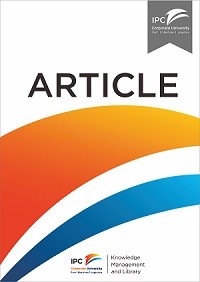Article
World container port throughput follows lognormal distribution
We show in this paper that the throughput data for the top 300 container ports reported each year by the various authorities follows a simple truncated lognormal distribution. This surprising phenomenon repeats itself every year from 1982 to 2006, despite many tumultuous changes in the container shipping world. The empirical data suggests that Gibrat’s Law of proportionate growth indeed holds for the world container throughput data. Unfortunately, the classical stochastic growth model and other variants often used to explain the origin of this law appears to be too simplistic for the container terminal industry. We use instead the perspective that the container terminal throughput data are essentially an aggregate measure of the number of visitations as each container circulates on the world shipping network, and use this to propose a Markov chain based container circulation model to explain the origin of this phenomenon. Simulation results show that our network-based model is able to replicate the behavior of the empirical data to a reasonable degree of accuracy, and does not contradict the law of proportionate growth. More importantly, this model is able to replicate the relationship between the degree of connectivity of a port (i.e. number of linkages with other ports) and its association with the container throughput data, an empirical regularity which could not be explained using classical approaches.
Ketersediaan
Informasi Detail
- Judul Seri
-
Maritime Policy & Management: The flagship journal of international shipping and port research
- No. Panggil
-
ATC LO DIN w
- Penerbit
- China : routledge taylor france group., 201O
- Deskripsi Fisik
-
28 p.
- Bahasa
-
English
- ISBN/ISSN
-
1464–5254
- Klasifikasi
-
LO
- Tipe Isi
-
-
- Tipe Media
-
-
- Tipe Pembawa
-
online resource
- Edisi
-
VOL. 37, NO. 4, 401–426
- Subjek
- Info Detail Spesifik
-
-
- Pernyataan Tanggungjawab
-
Ding Ding
Versi lain/terkait
| Judul | Edisi | Bahasa |
|---|---|---|
| A comparison of efficiency with productivity criteria for european container ports | id | |
| Maritime policy in the North Sea region : application of the cluster approach | Vol. 16, 4, 484–500 | en |
Lampiran Berkas
Komentar
Anda harus masuk sebelum memberikan komentar

 Karya Umum
Karya Umum  Filsafat
Filsafat  Agama
Agama  Ilmu-ilmu Sosial
Ilmu-ilmu Sosial  Bahasa
Bahasa  Ilmu-ilmu Murni
Ilmu-ilmu Murni  Ilmu-ilmu Terapan
Ilmu-ilmu Terapan  Kesenian, Hiburan, dan Olahraga
Kesenian, Hiburan, dan Olahraga  Kesusastraan
Kesusastraan  Geografi dan Sejarah
Geografi dan Sejarah